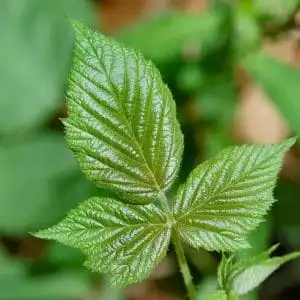Poison ivy quickly takes the fun out of summertime picnics, playtime, and gardening. Common throughout the United States, this invasive weed causes an itchy rash when one comes in contact with it. And scratching that itch only makes it spread. To prevent poison ivy from sucking the fun out of your summer activities you’ll need to properly identify it and safely remove it. Read on to find out more.
Proper Identification
The fact that this weed looks different depending on the season, plant’s age, and variety makes it hard to identify. Oval glossy leaves in clusters of three are the main characteristic of poison ivy. Unfortunately, many other plants share this trait, like box elder and Virginia creeper. Each poison ivy leaf comes to a point at the top. The central leaf in the cluster often has a longer stem than the side leaves.
While no leaves line the vine in the winter, springtime brings a variety of red and orange shaded leaves. The leaves are green in the summer months and sometimes share the vine with little greenish-white flower clusters. By autumn, they turn brilliant shades of red, orange, and yellow. Waxy white berries join the leaf clusters.
Tips for Safe Removal
Although it’s difficult to prevent poison ivy when hiking or camping, there are ways to remove it from your yard if you are very careful. All parts of the plant contain the toxic chemical that causes the rash, so grabbing the vine alone won’t keep you safe.
First and foremost, dress appropriately. Keep completely covered with gloves, long pants, and long sleeves. It’s smart to wear goggles and a mask as well. Your clothes require immediate washing afterwards before they come in contact with anything else. Hose off boots or shoes plus any equipment you use with soapy water. Dispose of gloves.
Once you are dressed for battle, grab your shears and cut the vines off at the ground. (Never rip the vines out. This can release toxins into the air.) Then, dig out the roots with a shovel, making sure to go deep enough to get the entire root. Place vines and roots in garbage bags. Be sure to completely seal them up and dispose of them properly. Never burn or compost the removed plants!
Prevent Poison Ivy and Other Invasive Weeds
Don’t be discouraged if you have to repeat the removal process more than once. You may also need to use an herbicide on remaining stubs and plants. There are many herbicides on the market to prevent poison ivy and other invasive weeds, but use them with care because they kill other plants as well. Pick one containing glyphosate or triclopyr and apply on a dry, windless day.
If you prefer to keep your distance from poison ivy and other invasive weeds, call Free Spray Lawn Care today at 419-529-5296. We’ll get rid of it for you, so you can enjoy a carefree summer.



Comments (0)
Thanks for your comment!
Thanks for your feedback! Your comments have been successfully submitted! Please note, all comments require admin approval prior to display.
Error submitting comment!
There is a problem with your comment, please see below and try again.